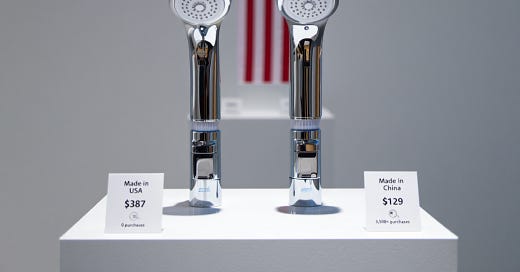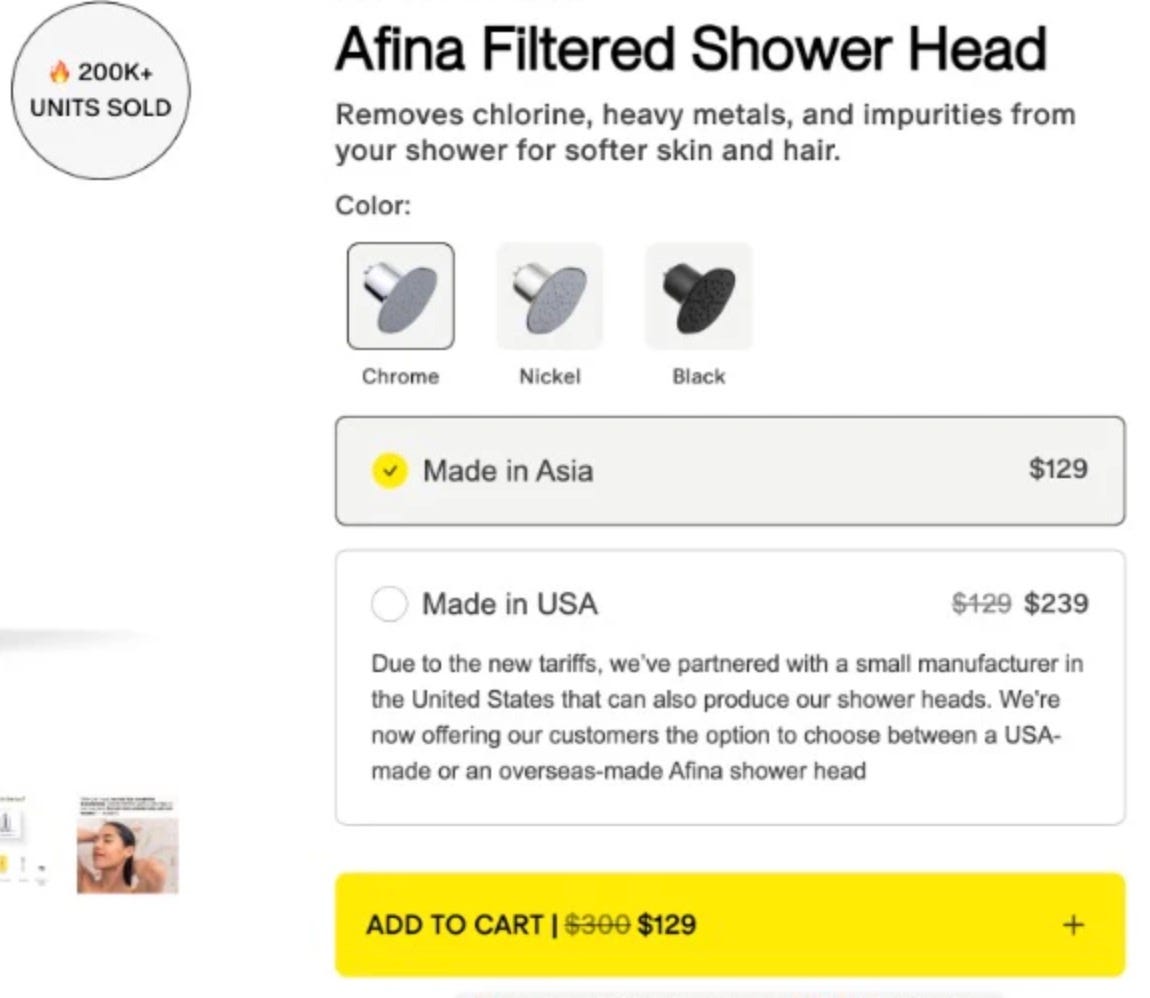Made in America: The Price Tag of Patriotism
How Much Are We Really Willing to Pay for Domestic Manufacturing?
We build beautiful narratives about our values. We tell stories about what matters—local manufacturing, sustainability, ethical production.
We imagine ourselves as conscious consumers, making choices aligned with our highest principles.
But what happens when the checkout page appears?
One of the most important lessons I've learned in my product career is that when getting user feedback — people’s words rarely match their actions.
Maybe you’ve heard the concept of “stated preferences vs. revealed preferences” before. It took me years to fully understand this, but now I think about it all the time.
Stated preferences are the feel-good stories people tell themselves—and us—about what they value and what they will choose.
Revealed preferences are the blunt truths exposed by their actions, especially when money or convenience is at stake.
I was again reminded of this framework last week amid growing conversations about bringing manufacturing back to America.
Ramon van Meer, a former Shark Tank contestant, shared an A/B test that captured a lot of attention.
His company, Afina, sells a popular filtered showerhead made in China for $129. When tariffs surged to 170%, Ramon’s team explored reshoring production.
They found a domestic supplier, but the price jumped significantly to $387, nearly triple the original cost. They tested it anyway and even subsidized some of the cost by listing the USA-made version for $239.
The results were striking:
Not one person chose the American option
Less than 1% even considered it worthy of their cart
3,500+ people chose the cheaper import
We're all unreliable narrators in the economic stories we tell. We craft identities as ethical consumers while our fingers tap "add to cart" for the cheaper option.
Consumers might be willing to pay a premium for the "Made in America" label, but clearly not a 3x markup. And the premium likely varies depending on the visibility of the product—after all, you earn more social credit for buying an American-made car than an American-made showerhead hidden in your bathroom.
Van Meer summed it up candidly:
We want to bring back domestic manufacturing. But when faced with the real cost, consumers didn’t bite. It’s not that they don’t care—it's simply that they’re not willing to pay the premium. At least, not yet.”
The most fascinating question isn't whether manufacturing should return to America.
It's whether we can evolve into consumers whose actions align with our aspirations—or whether we'll continue living in the comfortable space between what we claim to value and what we're actually willing to pay for.
Many Americans wave the flag for domestic manufacturing until confronted by the price tag. Patriotism feels good, but apparently, saving $258 on a showerhead feels even better.
So, what story does your shopping cart tell about you?







